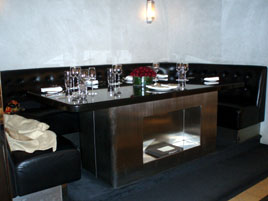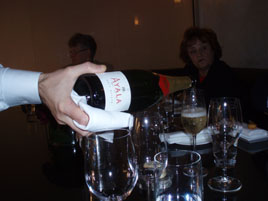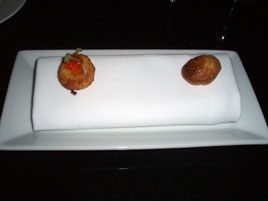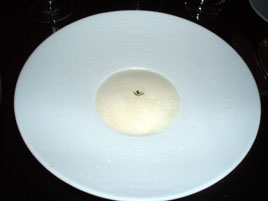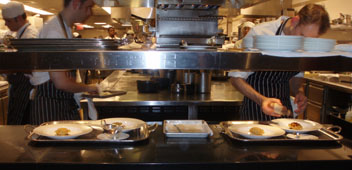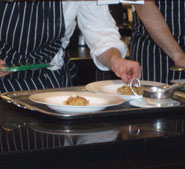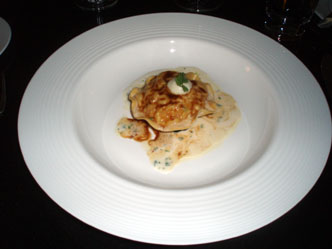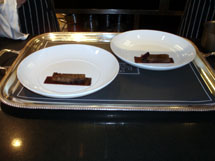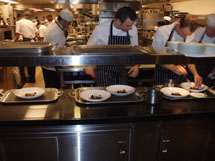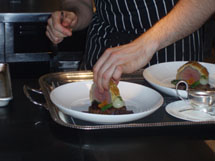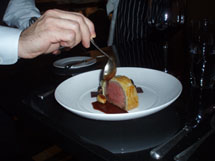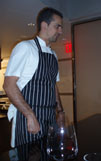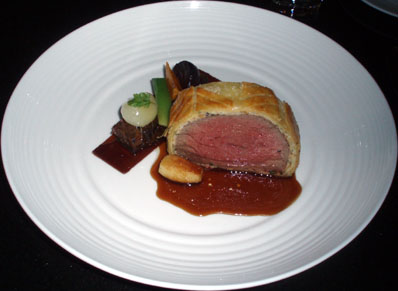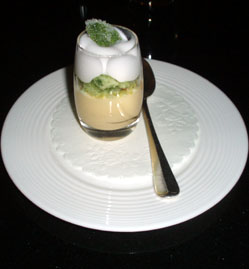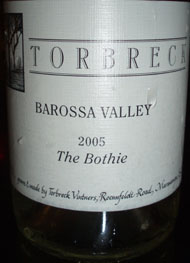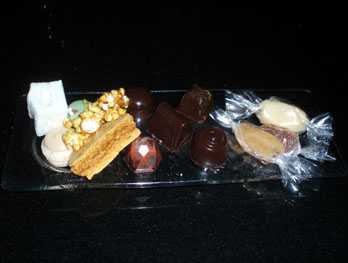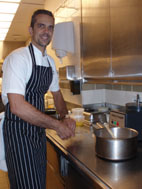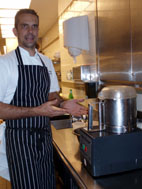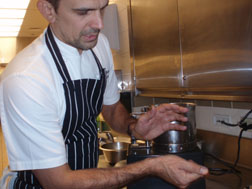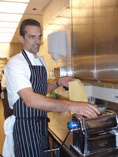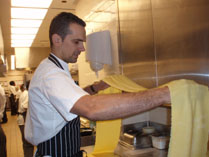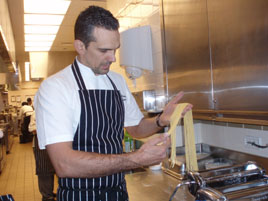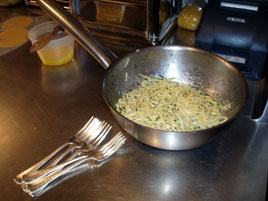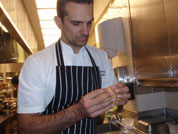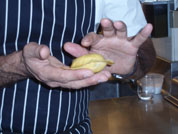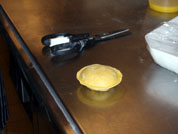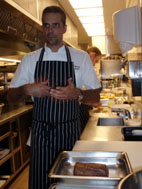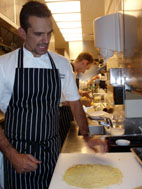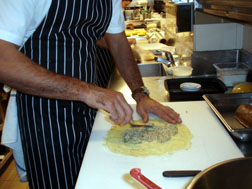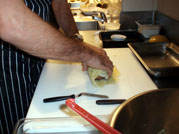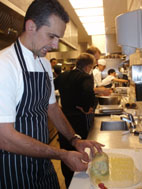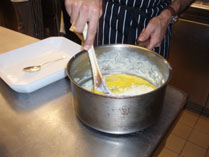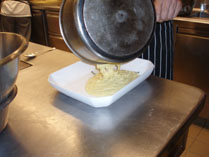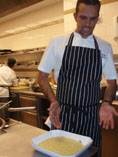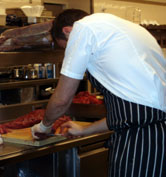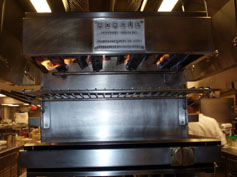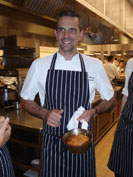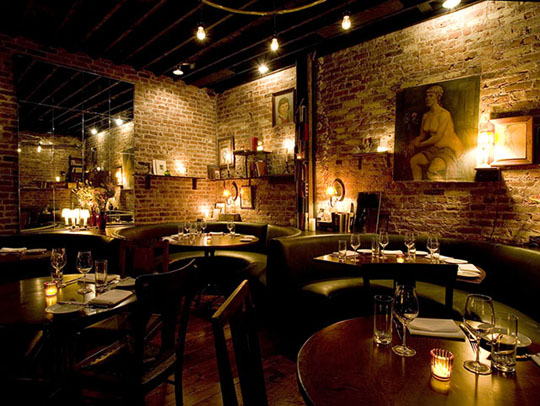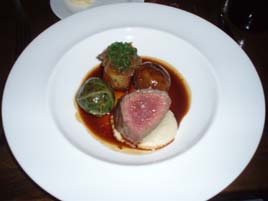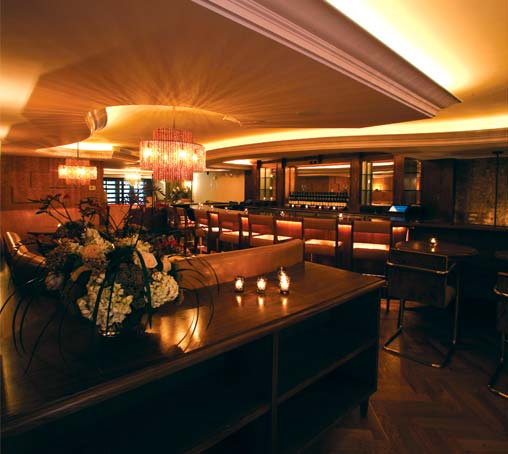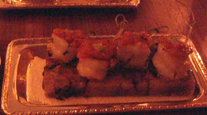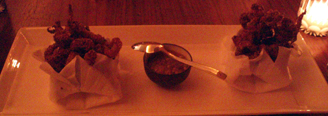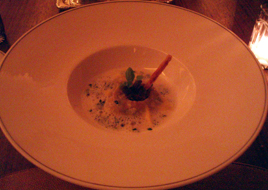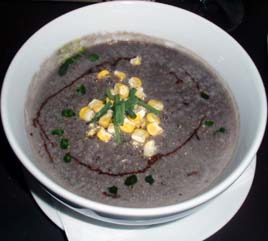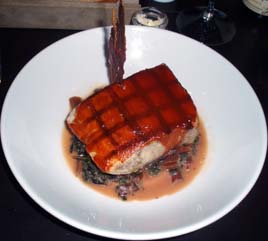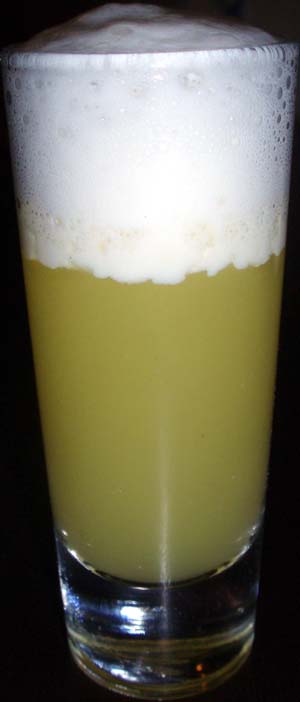Gray Kunz and the Short Rib Derby
 Wednesday, May 21, 2008 at 07:43PM
Wednesday, May 21, 2008 at 07:43PM 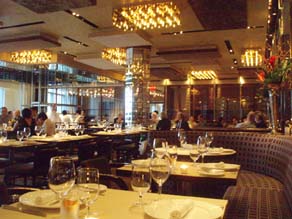
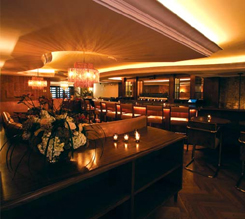
Left: Café Gray; Right: Grayz
Note: Café Gray and Grayz have both closed. Café Gray will be replaced by a clone of A Voce. Grayz re-opened in January 2009 as Atria, with Gray Kunz’s former chef de cuisine, Martin Brock, as executive chef. After four short months, it bit the dust.
Café Gray will shortly be closing, a victim of sky-high rents at the Time Warner Center. That will leave the talented chef, Gray Kunz, with just one restaurant, Grayz, which struggles with problems of its own.
Linking both restaurants is one of this town’s great chefs and his destination dish, the legendary braised short ribs. He served a version of the dish at the four-star Lespinasse, and it anchors the menus at both Café Gray and Grayz.
Recently, I tried the short ribs at both places. I wondered: how are they different? how are they alike? I also wanted to bid farewell to Café Gray, and to see if Grayz is as good as some message board enthusiasts say it is.
* * *
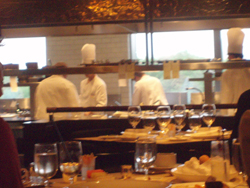 At Café Gray, one can’t help escaping the glimmer of what might have been. In previous visits, I’ve never had the slightest doubt about the food: Kunz can cook rings around anyone. But the room: oh, the room! It’s noisy and ugly, and it interposes an open kitchen between diners and the world’s best view.
At Café Gray, one can’t help escaping the glimmer of what might have been. In previous visits, I’ve never had the slightest doubt about the food: Kunz can cook rings around anyone. But the room: oh, the room! It’s noisy and ugly, and it interposes an open kitchen between diners and the world’s best view.
If you’re going to visit Café Gray, its final weeks are the best time. I found it mostly empty on a Wednesday evening. There’s no escaping the bone-headed design, but at least I had a pleasant supper without contracting a migraine.
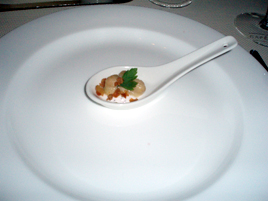

Left: amuse-bouche; Right: petits-fours
Service was polished and seamless. The amuse-bouche was a small spoonful of chickpea yogurt, and there was a nice plate of petits-fours at the end.
I left Café Gray with a bit of sadness. This restaurant should have been, could have been, so much better.
* * *
 Grayz is living proof of what happens when a promising restaurant botches its opening. The trouble here was that Kunz couldn’t decide if he was opening a bar that served snacks or a restaurant with a bar. The muddled concept was confusing, and early reviews weren’t favorable.
Grayz is living proof of what happens when a promising restaurant botches its opening. The trouble here was that Kunz couldn’t decide if he was opening a bar that served snacks or a restaurant with a bar. The muddled concept was confusing, and early reviews weren’t favorable.
The menu has been revised, and it makes more sense now. The entrées, which numbered just three when I visited in the early days, have now been expanded to six. Whether you want a full meal or just to…well, “graze”—Grayz can accommodate you.
The interior design betrays indecision about the concept. You still feel like you’re in a bar that serves snacks, but the service is very good, and the food is first-class. Think of it as an elegant restaurant where the bar is closer than you’d like it to be, like a social misfit elbowing in on your privacy.
Despite its flaws, Grayz deserves your attention.
Unfortunately, it’s hard for a restaurant to get the word out after the early review cycle has concluded. The tables were less than half occupied on a Wednesday evening, and according to reports I’ve read elsewhere, that’s not unusual. The GM came over after my meal, greeted me warmly, and gave me his card. Grayz is still trying to cultivate a following.

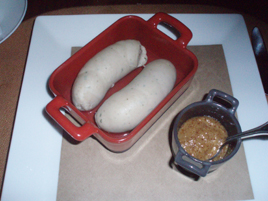
Left: Bread service; Right: Weisswurst
To begin, Grayz offers the same wonderful spears of warm bread as before, with a Lebanese yogurt, spice, and olive oil dressing. I was better behaved this time: I stopped after only one.
I ordered the Weisswurst ($12), or German sausage, which comes with a homemade brown mustard. I’m not a connoisseur, so I don’t have much to compare it to. I loved the delicate casings, but the mustard was definitely needed, as the meat didn’t have enough flavor on its own. The bright-red cast-iron serving dish got in the way of my knife and fork.
 To close, the petit-four was a hollow cylinder of crisp brown chocolate on a bed of sugar.
To close, the petit-four was a hollow cylinder of crisp brown chocolate on a bed of sugar.
The cocktail menu here is a cut above the norm. I tried two of them, the Badminton Cup and the Aviation, both $14. My table was close enough to the bar that I could hear the conversation between the bartender and one of his customers—a post-modern meditation on the “art of cocktails.” I thought, “This is so 2008.”
* * *
So, what about the short ribs?
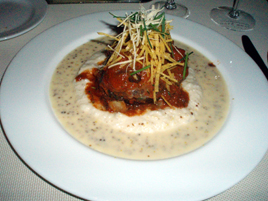

Short ribs at Café Gray (left) and Grayz (right)
As you can see from the photos, they are quite similar. The manager at Grayz said he believes the meat is prepared identically. At Café Gray, it’s served on a bed of soft grits; at Grayz, it’s creamed spinach. The price is $41 at Café Gray, $39 at Grayz.
If I could have only one before I die, I’d choose the Grayz version. It was served on the bone; at Café Gray, there was no bone. At Grayz, it was slightly more tender, and spinach goes better with beef than grits. You could argue, though, that $39 is awfully dear for short ribs, even Gray Kunz’s.
* * *
Kunz says that Café Gray will re-open at another location—rumored to be the current Oceana space.. He’s known to be a slow-poke, so I wouldn’t hold my breath for it. Wherever he goes, his first act should be to fire himself as an interior designer. But while we wait for Café Gray’s reincarnation, Grayz will be quietly chugging along.
Give Grayz a try. You could be pleasantly surprised.
Update: Grayz will close on August 10, 2008, for a facelift, re-opening on September 1. The downstairs catering space will become a proper restaurant, and the upstairs space—reviewed here—will presumably become what it was meant to be: a lounge.
Grayz (13–15 West 54th Street between Fifth & Sixth Avenues, West Midtown)
Food: **½
Service: **
Ambiance: *½
Overall: **



